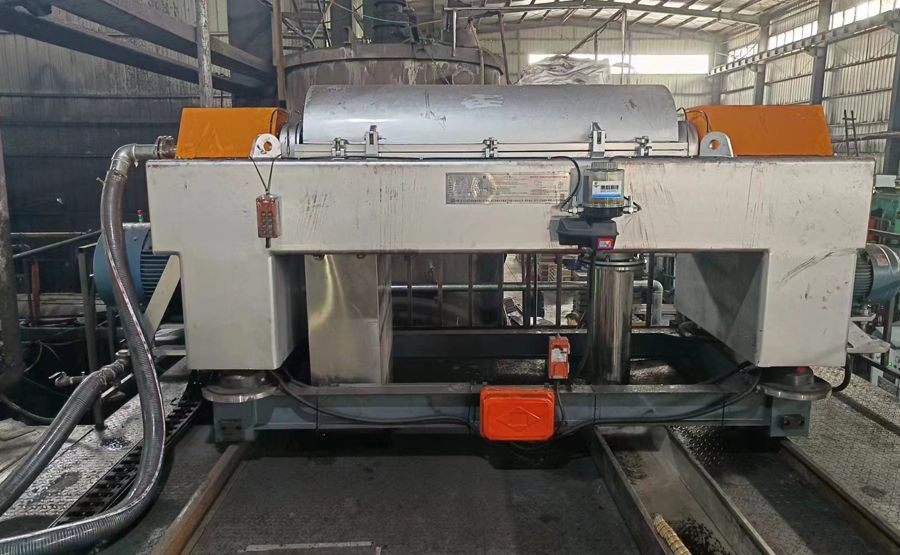According to the composition and characteristics of coal chemical wastewater, different treatment methods can be adopted. Different types of coal chemical wastewater have complex components and high concentrations of pollutants, so it is difficult to treat them. The following are recommendations for the treatment of each type of wastewater:
1. Coal to gas wastewater: The coal to gas wastewater contains various pollutants, such as ammonia nitrogen, phenols, petroleum, cyanide, sulfide, etc. When treating this kind of wastewater, attention should be paid to the requirements of treatment load and the inhibition of toxic substances such as phenols and cyanides on microbial activity. Due to the poor biochemical property of wastewater and the difficulty in biodegradation, other physical and chemical treatment methods may be required, such as adsorption, oxidation, membrane separation, etc.
2. Coal to oil wastewater: The coal to oil wastewater has high concentration of COD, chroma and emulsification degree, which is difficult to degrade. Due to its high sulfur, phenol and oil content, the treatment effect of general biological treatment method is poor. For this kind of wastewater, it is necessary to remove sulfur, phenol and suspended solids in the wastewater through pretreatment methods, such as physical precipitation, chemical oxidation, etc., and then carry out biological treatment, or consider using other advanced treatment technologies, such as biofilm reactor, activated carbon adsorption, etc.

3. Coal coking wastewater: The pollutants of coal coking wastewater are complex, including high concentration COD and ammonia nitrogen. The research shows that the wastewater contains a large number of phenols, ammonia nitrogen and other organic and inorganic substances, which is highly toxic and difficult to degrade. For the treatment of coking wastewater, physical and chemical combined treatment technologies such as biological filter, chemical precipitation, advanced oxidation and other methods can be used to improve the biodegradability of wastewater.
4. Wastewater from coal to methanol and olefin: wastewater from coal to methanol mainly comes from gasification wastewater, which is characterized by high ammonia nitrogen and COD. The wastewater is suitable for biological treatment, but attention should be paid to the characteristics of high ammonia nitrogen concentration and low carbon source. The content of harmful substances in coal to olefin wastewater is high, and direct discharge will lead to serious pollution. When treating this type of wastewater, biological treatment, direct combustion and other treatment methods can be considered, but attention should be paid to the problem of high cost.
In conclusion, according to the characteristics of different types of wastewater, combined with physical, chemical and biological treatment methods, and considering factors such as treatment effect and cost, it is necessary to find a suitable treatment scheme for the treatment of coal chemical wastewater.
Zhejiang Zhengda Environmental Protection Equipment Co., Ltd.: focusing on Horizontal spiral sedimentation centrifuge, sludge dewatering machine, sludge treatment equipment, centrifugal dewatering machine, sludge dewatering equipment, solid-liquid separation equipment, horizontal spiral centrifuge, centrifuge, mud dewatering machine, mud dewatering equipment, mud treatment equipment, horizontal centrifuge, solid-liquid separator Production, sales and service of various solid-liquid separation equipment. Welcome new and old customers to come for consultation and investigation.
Factory address: No. 812, Jiulong Street, Bihu Town Industrial Zone, Liandu District, Lishui City, Zhejiang Province Telephone: 0578-2788008 Fax :0578-2788681
Email: [email protected] website: //hcsxe.com
Mobile: 15857812218 (Mr. Mao) fifteen billion two hundred and fifty-seven million eight hundred and twenty-six thousand six hundred and nine (Manager Xu) thirteen billion nine hundred and six million seven hundred and eighty-eight thousand three hundred and sixty-seven (Mr. Xu)


